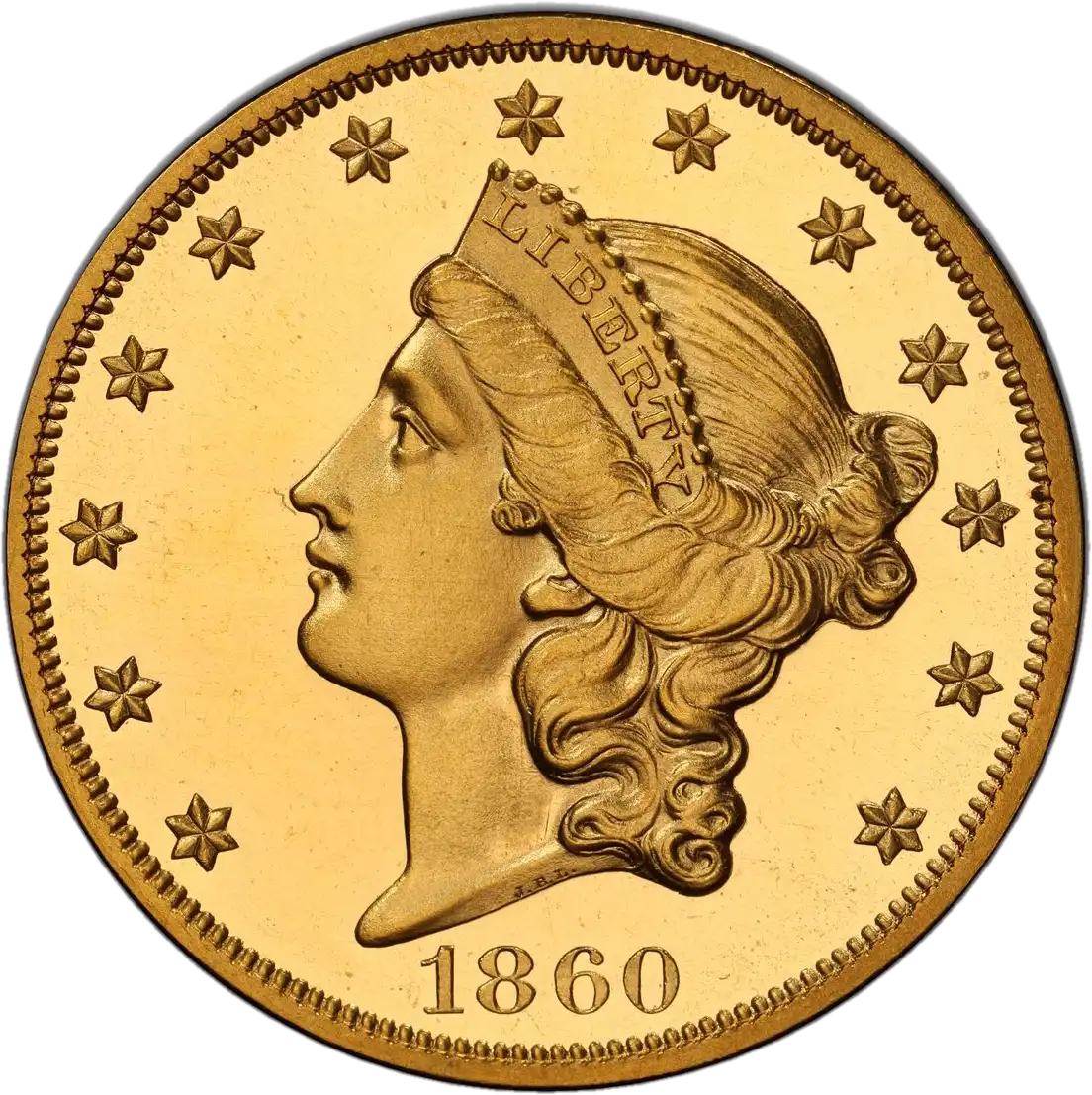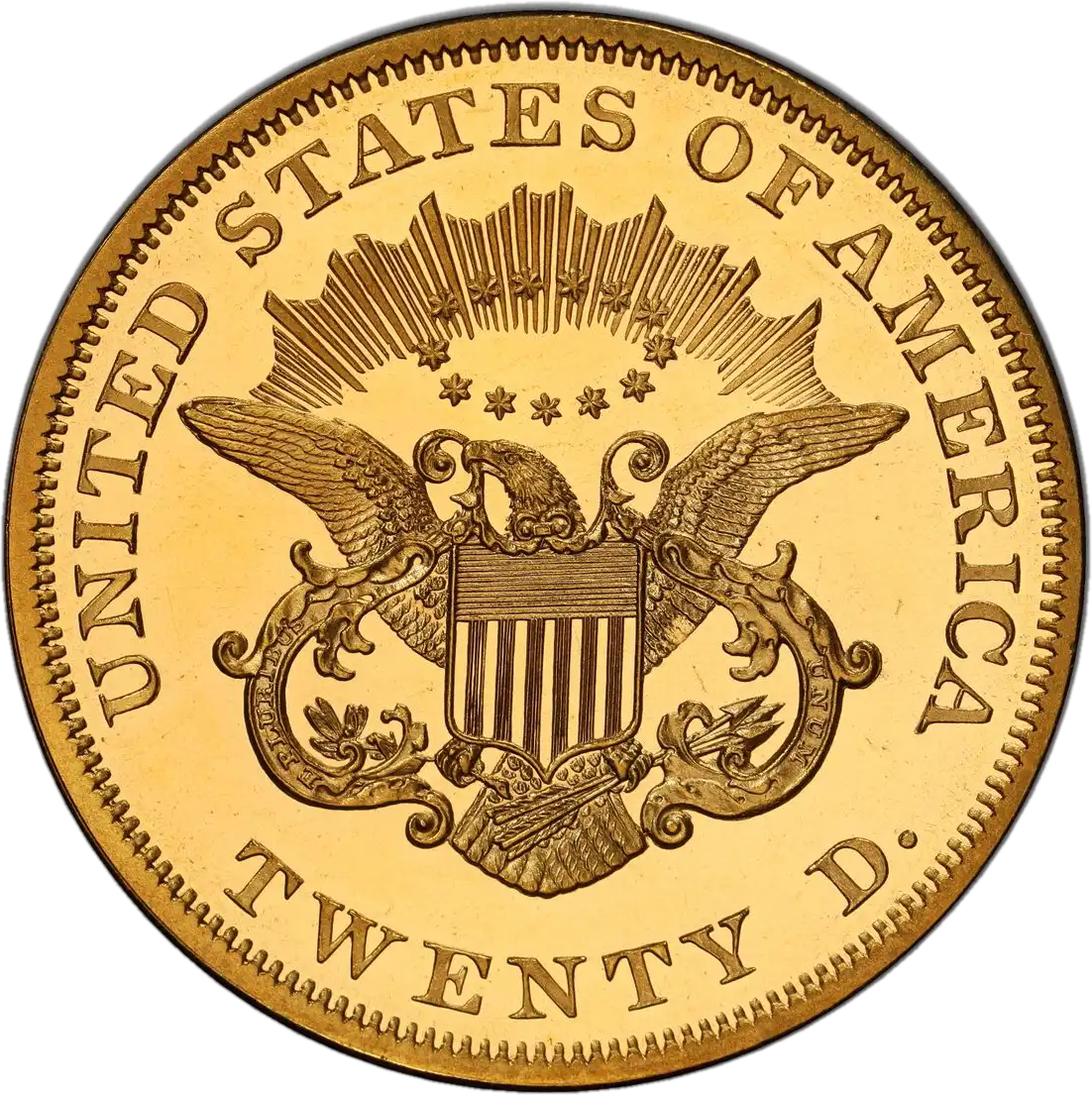USA 20 dollars Liberty Head Double Eagle 1860-Proof


Rarity
Attributes of Coins
| Melt Value | $3,942.78 30.096g Gold |
|---|---|
| Region | USA |
| Denomination | 20 dollars |
| Krause number | KM# 74.1 |
| Mintage | 59 |
| Metal | Gold 0.900 |
| diameter | 34 mm |
| weight | 33.44 g |


Introduction of Coins
Proof Liberty Head double eagles of any date are rare, especially in high grade, and a proof double eagle of the 1860s vintage, as the present coin, is exponentially rarer still. The year 1860 was only three years after the first great wave of coin collecting arose in America. Most members of the burgeoning collector community were pursuing either Washington items, Colonials, foreign coins, and/or the 'old coppers,' the large cents and half cents that had been only recently withdrawn from circulation.
The Liberty Head double eagle design was developed in 1849 and launched commercially in 1850 in response to the great wave of newly mined gold from the West. Dr. Robert Loewinger reports that proof double eagles dated before 1858 are all but nonexistent:
'There was at least one Proof made in 1850 in Philadelphia, and also a brilliant Proof made in 1854 at the San Francisco Mint. No Proofs were made from 1851-1853 and from 1855-1857. The city of Bremen, Germany Proof set likely contained an 1854 double eagle. Proofs were made during the years 1858-65.'
In 1860, few indeed were the collectors interested in assembling modern-era gold coins, and fewer still were the number interested in obtaining (and preserving) a proof double eagle over a Mint State business strike. The year 1860 was also only the third year that the Mint publicly marketed proof coins to collectors.
The proof mintage of the 1860 double eagle is recorded as 59 pieces. The proof coins were manufactured with frosted devices against deeply mirrored fields, a prized attribute among collectors today and one that is responsible for the existence of wonderful borderline Cameo examples. Despite the original mintage figure, Breen writes in his Proof Encyclopedia:
'Gold proof sets. All the gold proofs were delivered April 5. At least 30 were sold in sets, some of the lower denominations as individual coins, the remainder unsold being melted in January 1862 per R.W. Julian. There are not now 30 proofs extant of any of the higher denominations.'
Regarding the 1860 double eagle proof in particular, Breen opines that 'probably less than 10 survive in all.' We would be unsurprised to learn that the total is actually smaller still.
Read More












